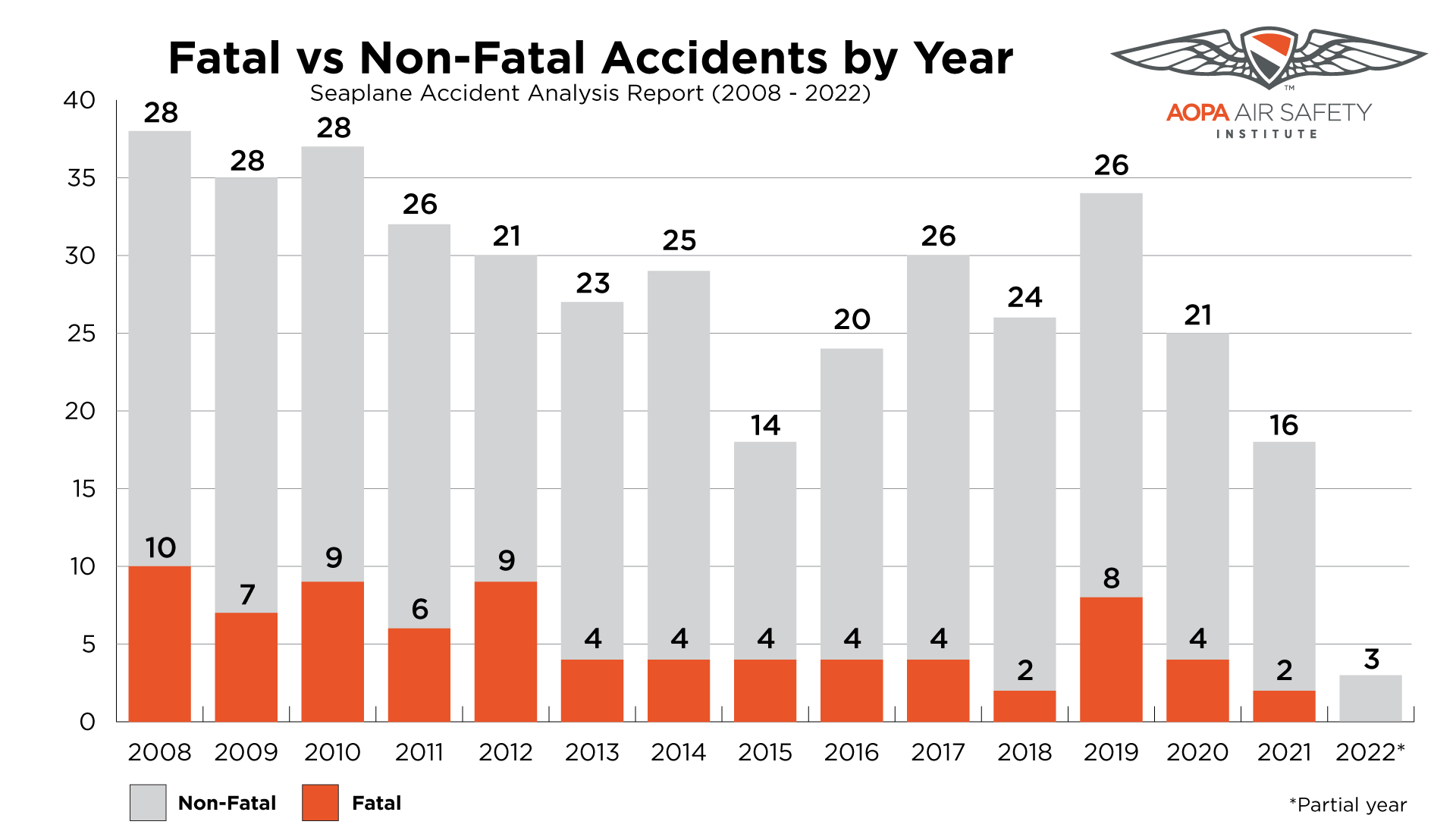EXECUTIVE SUMMARY

Seaplane accidents, while few, represent an area of general aviation where targeted focus on training should reduce the number of occurrences.
The FAA has repressed seaplane activity data since 2015 due to unreliable reporting and analysis. For example, few seaplane aircraft operators report their hours. In addition, aircraft that switch out floats for other landing gear—as the season dictates—make reporting more difficult.
Abnormal runway contact (ARC)—This is best thought of as a landing surface contact since seaplanes do not need to operate from a paved runway surface. ARC dominates seaplane accident causes. These types of accidents occur mainly during landing (90 percent), with many resulting from gear-down water landings. The broader adoption and installation of gear warning systems that aid in identifying the landing surface should also reduce accidents in this category. In addition, broader reach with the Seaplane Pilots Association’s “Positive rate, gear up” campaign will be helpful.
Loss of control in flight (LOC-I)—This is the deadliest accident cause and given seaplanes’ unique operating environment, the maneuvering phase is where most of these accidents occur. Dedicated efforts targeted at low-speed awareness, distraction prevention, and positive aircraft control could drive down the frequency of fatal accidents. Seaplane pilots may also benefit from the installation and use of angle of attack indicators.
Activity Data
The FAA has repressed seaplane activity data since 2015 due to unreliable reporting and analysis. For example, few seaplane aircraft operators report their hours. In addition, aircraft that switch out floats for other landing gear—as the season dictates—make reporting more difficult. This limited availability of seaplane flight hours and activity prevents a rate-based analysis and a normalization of the frequency of seaplane accidents. This also precludes a meaningful year-to-year comparison and understanding of whether the rise and fall of accidents is attributed to flight activity or to an actual change. Taking a broad look at the data suggests that the small number of accidents subject the data to spikes throughout the analysis period. However, fatal accidents appear relatively stable.
Note: Improved outreach to seaplane operators/owners could see seaplane activity data return to the FAA’s yearly activity survey.

No Greater Burden
Living with the consequences of an aircraft accident is hard. Living with the loss of a son is excruciating. In this special video presentation, we take a sobering look at one pilot's personal tragedy, the devastation it wrought, and the lessons all of us can take from it.